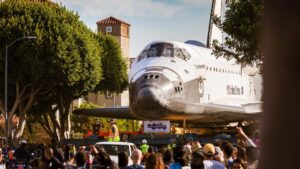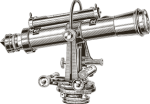The Titanic – An Overview
For over a century, the Titanic has been shrouded in mystery. In 2001, filmmaker James Cameron set out to explore and photograph the lost liner in unprecedented detail. With his groundbreaking documentary Ghosts of the Abyss, he revealed astonishing secrets preserved in the wreckage of this iconic ship.
What lay beneath the waves of that fateful April night in 1912 when the Titanic sank? What secrets and mysteries did she take to her icy grave? For over a century, brave explorers have dared to venture deep into the ocean’s depths in search of answers. This technological expedition was one filled with adventure and intrigue. Using state-of-the-art 3D cameras, tiny underwater robots, and submersibles, this unique journey unveiled what lay inside the Titanic- from her ornate cabins to decades-old artifacts. By employing state-of-the-art robotics and cutting-edge 3D technology, Cameron unlocked never before seen locations within the sunken vessel. Discoveries streamed live for a global audience on Earthship.tv from the decks of RMS Keldysh, a Soviet research vessel stationed at the wreck site in the heart of the North Atlantic. That’s where I come in.
How I Worked on the Project
I wasn’t a Titanic expert. Nor was I particularly a huge Titanic fan. I only had general knowledge about the famous ship and remember when Bob Ballard’s team found the wreck and the first tourists visited. I’d seen the movie. I knew the story of the unsinkable Molly Brown. When I was a child, my aunt took me to the Molly Brown House in Denver, which includes Titanic in its exhibits. Every Colorado history class teaches the story of that infamous Coloradan. In fact, I found the tenacity of Molly Brown so remarkable that I named my dog after her. That was about as far as my knowledge of the Titanic went. So I was surprised when a friend called me and asked if I’d like to work on a webcast from the Titanic. I laughed. He didn’t even have to ask. I was already packing my bags.
I had a background in producing television documentaries, web content, and streaming webcasts (it was brand new at the time), a keen sense of adventure, and a dog named Molly (Brown).
There I was – invited to produce on the most ambitious webcast ever attempted, on the most advanced technological expedition on earth, while filming the most technologically advanced 3D high-definition documentary ever made about the most famous shipwreck in history. I was hooked.
Overview of the Most Advanced Webcast Attempted
This radical idea of webcasting the Titanic live from aboard the Keldysh in the middle of the North Atlantic was audacious. The idea was the brainchild of John David Cameron, Jim’s younger brother. We streamed on Earthship.tv, which was ahead of its time by several years. We were basically webcasting – video on demand – youtube style – except in 2001. This was five years before Youtube. Most people only had dial-up internet service. Everything about the project pushed the limits of technology.
We sent our video to a satellite from onboard the ship and our headquarters in Los Angeles would pick it up. My job was to write and produce video packages about the expedition, specifically, the bots – those tiny robots used to explore inside the Titanic. The most remarkable thing about the bots is that they were small and could get into tight spaces. You could drive them in one entrance and exit by another without backtracking or worrying about entangling the umbilical. Tiny fiber optic threads spooled out like a spider’s web from the bots to the controls. One fiber had the drive controls, and the other would return the camera image. They were brilliantly designed and built by Mike Cameron (Jim’s older brother) and his team. They enabled us to look at the inside of the Titanic for the first time since she sank.
The Impact and Legacy of the Project
The Ghosts of the Abyss project had a lasting impact on exploration, filmmaking, and the internet for years to come. Our breakthroughs in webcasting and filmmaking have been applauded for pushing the boundaries of what was believed possible until then. Through our efforts, we made discoveries that had been lost to time as well as new technical findings altogether. What’s more, is that this successful Titanic expedition encouraged others to explore the unknown and created an atmosphere of trailblazers on their own journey of acquiring knowledge about their subject.
Ghosts of the Abyss was the first in a series of Titanic and underwater expeditions on which I’ve worked. I’ve produced, written, coordinated, and developed on all of James Cameron’s expeditions. The people working on these expeditions always inspire me; some are almost as legendary as the Titanic. One thing they all have in common is an unquenchable thirst for exploration, knowledge, science, technology, and adventure. Lucky for me, these people would become my surrogate family and mentors over the next few years.
Experience Titanic for Yourself
If you haven’t seen the film, do so. I won’t take away all the fun and give away the surprises or talk about the grandeur of what they found inside the wreck. You’ll have to explore that on your own. To experience our results firsthand and go further down the path we paved during our mission, put it in your Netflix cue or click on the link below and embark with us on this amazing journey!
All things Ghosts of the Abyss











